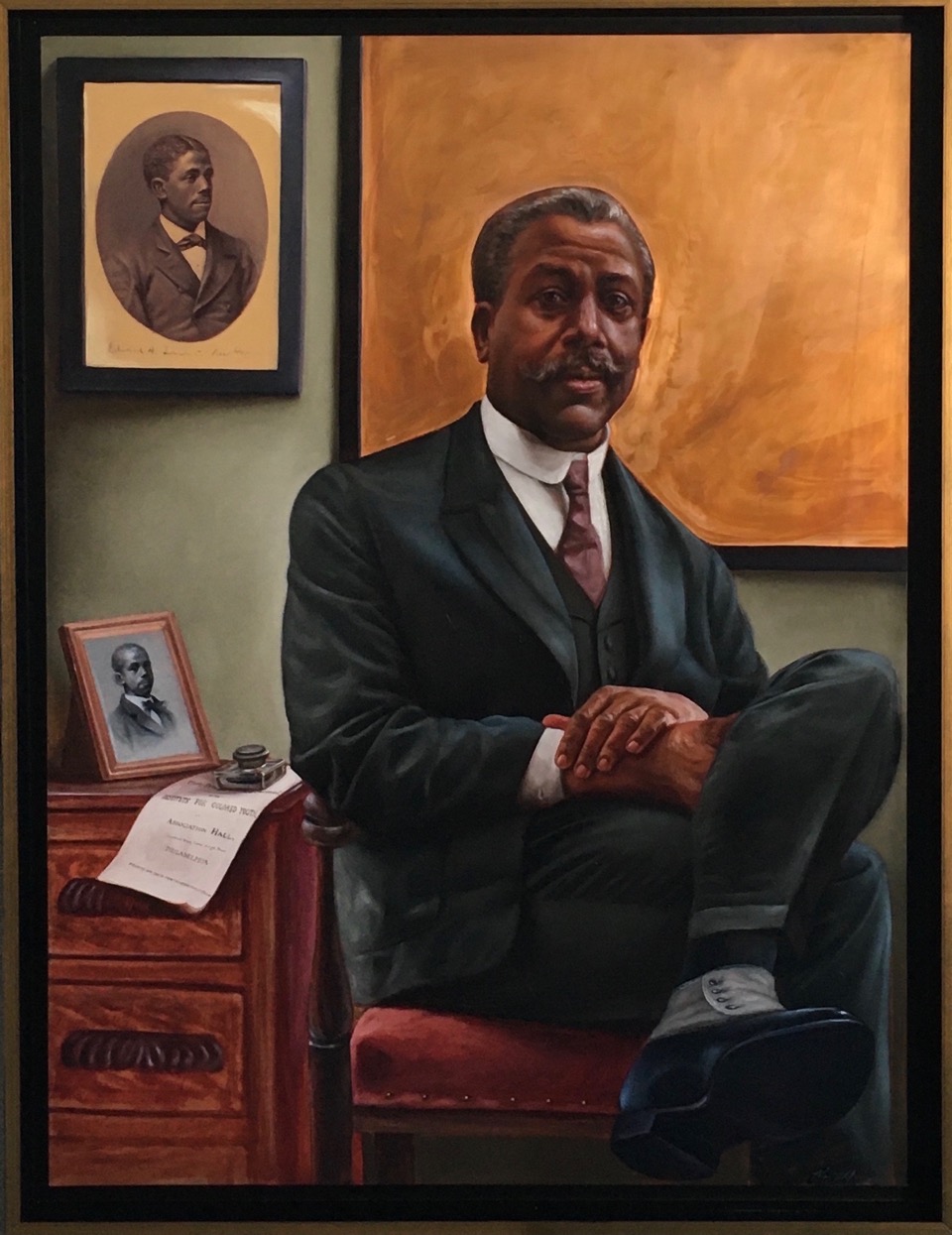
Courtesy of Thomas Near
Saybrook College’s dining hall — currently lined with portraits of former Heads of College, Deans and a selection of prominent white people — will feature its first portrayal of a person of color when a new portrait of Edward Bouchet, class of 1874, by Mario Moore ART ’13 is installed next semester.
Bouchet was Yale College’s first Black student and America’s first Black PhD. A committee of students, assembled by Saybrook Head of College Thomas Near, chose Bouchet as the portrait’s subject amid conversations about representation. According to Near, the Saybrook community acknowledges Black people’s place in Yale’s history through this project.
“It’s not just a testament to the individual,” Near said. “It’s an allegory for the entire struggle of Black people in this country. Given the diversity of our undergraduate body, I would like the way we honor our history to look as real as possible. And if we can do that, then I think our honorifics will be fairly representative of our undergraduate body.”
The portrait comes after a Saybrook renovation two decades ago. This renovation led to the creation of a new entryway, which was named after Bouchet. The entryway installation prompted conversations surrounding racial representation in the college, which led Near to eventually establish a committee. He said this committee consists of students “interested in having a positive effect on the college.”
Moore, an artist from Detroit who currently works in New York, was commissioned for the project. Painting the portrait took Moore around three weeks. Even though he knew how he wanted to represent Bouchet, he was thorough in his research.
Moore said he wants Bouchet’s lived experiences to “ring clearly” in the Saybrook community. A previous portrait of Bouchet depicts him right after graduation. But Moore said the alumnus’s life — which included teaching positions at several institutions, an active NAACP membership and physics research — is much richer than shown in the post-graduation portrait.
“There’s so much about him that people don’t know,” Moore said. “I wanted to show his life story. People in Saybrook sit in there and stare up at those portraits — people notice them. I wanted students to be able to see someone up there who looked like them.”
Moore’s work — ranging from copper portraits and drawings to objects — includes a recent series of portraits at Princeton University, where he showed various Black service workers. He was inspired by his father, who is a security guard, as he created that series. Moore said he enjoys exploring empathy in his art.
Near said the installation fits into a larger conversation about representation and association in Saybrook.
“We’re talking about making Saybrook less of a white space,” Near said. “From my naivete, I attribute gothic with white. Students said, ‘hey, what’s wrong with Black gothic?’ By honoring people of color that have real stories to tell that go back all the way to the mid-1800s, we make it less of a white space.”
Zach Redhead-Leconte ’24, a Black first year in Saybrook, was unaware of the unveiling of the portrait. He said this initiative should have been advertised more. Nonetheless, he believes this was long overdue.
According to Redhead-Leconte, Saybrook choosing to include this portrait of a person of color will make the residential college feel much more welcoming to students who look like Bouchet.
“These portraits we have up honoring countless white people always felt like they were looking down and watching me,” Redhead-Leconte said. “Most of them would hate the idea of someone who looks like me even walking through the halls.”
The portrait was first displayed to the Saybrook community at an Oct. 9 ceremony.
Owen Tucker-Smith | owen.tucker-smith@yale.edu
Bryan Ventura | bryan.ventura@yale.edu







